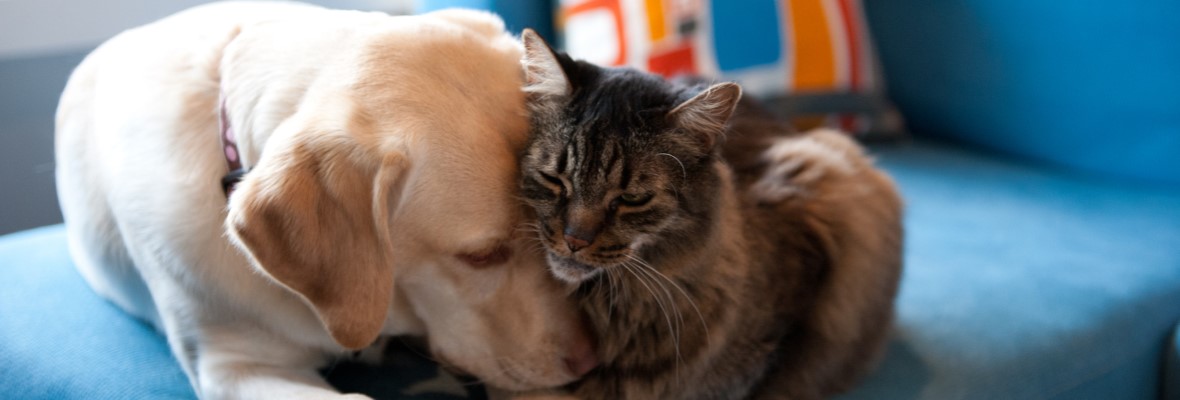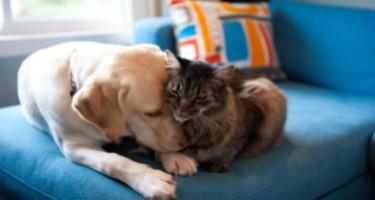Find out the common costs of acquiring a pet, and keeping them healthy in Budget Direct’s latest survey into Australian pet ownership.
3 November | See disclaimer
Quick facts
- Over 5% of surveyed pet owners spend more money on grooming and clothing for their pets than food, vet bills, toys or medications
- Surveyed dog owners were more likely to go via a breeder to acquire their pet, whereas cat owners were more likely to go via adoption
- 49% of surveyed Australian pet owners would be willing to spend $10,000 out of pocket to save their oldest/only pet if it became ill or injured
- Budget Direct’s Pet Insurance experts predict that snake attacks, tick paralyses and cancers can all easily cost more than $10,000 in vet expenses.
Fur families can be worth their weight in gold, for all the joy, companionship and laughter they bring. But from acquiring a pet to keeping it happy and healthy, how much do they really cost us?
We’ve surveyed 999 Australians through Pure Profile (weighted to represent all Australians who own cats and dogs), and collected data from Budget Direct’s Pet Insurance team to bring you:
- 1.0. Costs of acquiring a pet
- 2.0. Costs of common pet illnesses
- 3.0. Pet costs survey results
- 3.1. Do you have a cat or a dog?
- 3.2. How did you acquire your oldest/only pet?
- 3.3. What’s your oldest/only pet’s age?
- 3.4. What do you spend the most money on for your oldest/only pet?
- 3.5. What has been your highest vet bill to date? (excluding any pet insurance reimbursement)
- 3.6. How much were you able to claim for this vet bill?
- 3.7. Would you be prepared to spend $10,000 to keep your oldest/only pet alive if they became sick?
- 3.8. Why do you not have pet insurance?
| Acquisition Method | Approximate Costs |
|---|---|
| Adoption | $0 to $500 |
| Rescue shelter | $0 to $500 |
| Breeder | $500 to $5,000 |
Data compiled from Pet Secure and Canstar show that adoption and rescue shelters are by far the cheaper ways to acquire a pet. However, depending on the breed, availability, demand and appearance, pets from breeders can cost anywhere from $500 to several thousand.
‘Adoption’ typically refers to going through bespoke adoption services and agencies, whereas separate shelters can allow visitors to come and adopt an animal. Both processes involve rescuing an animal, and are therefore quite similar.
2.0 Costs of common pet illnesses
| Common illness | Approximate Cost |
|---|---|
| Snake attack | $1,000 - $23,000 |
| Broken bone | $3,000 - $4,000+ |
| Cancer (lymphoma) | $2,000 - $15,000 |
| Infected cut/laceration | $350 - $2,000 |
| Tick paralysis | $1,000 - $23,000 |
| Heart disease | $350 - $6,000 |
| Skin allergy | $1,000 - $7,000 |
| Ear infection | $180 - $900 |
| Bladder stones | $500 - $2,600 |
| Seizures/epilepsy | $350 - $6,000 |
Data compiled from the Pet Insurance team at Budget Direct show that seemingly common, everyday occurrences can incur major costs. With no public health systems in place for pet (like there is Medicare for humans in Australia), owners are faced with the choice of paying these fees out of pocket, or looking to recover costs from their private pet insurance policy.
3.0 Pet costs survey results
Throughout our survey results, options of viewing data by “age” or “gender” refer to the age and gender of the survey participant, not their particular pet/s.



